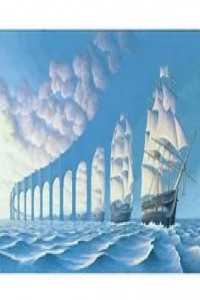Öz
İslam çalışmaları üzerine yoğunlaşan akademisyenler zor bir zamanda yaşamaktadırlar. Popüler haber ve bilgi kaynaklarının üretimi hem büyük sıkıntılara hem de devasa imkânlara yol açmaktadır. Bu durum sadece bizim alanımız için değil bütün akademi camiası için geçerlidir. Amerikan Tıp Derneği Dergisi’nin son sayısında bir grup tıp bilimci, aşılama ve bağışıklık kazanma ile ilgili YouTube’ta bulunan 153 videoyu analiz etti. Buldukları şey çok rahatsız ediciydi. YouTube videolarının şaşırtıcı bir çoğunluğu aşıyı negatif bir bakış açısı ile sunarken, yarısına yakını tıp biliminin tespitlerini tamamen yalanlayan mesajlar içermekteydi. Ayrıca araştırma grubu negatif bir bakış açısı yansıtan videoların çok provoke edici ve inandırıcı olduğunu, bu videoların YouTube kullanıcıları tarafından aşı hakkında pozitif görüşler sunan videolardan daha fazla görüntülendiğini ve daha iyi reytinglere sahip olduğunu tespit etti. Çalışma, bu durumun son derece tehlikeli olduğu ve halk sağlığı görevlilerinin, bilimsel olarak oluşturulmuş bakış açılarını internet video portalları aracılığıyla etkili bir şekilde iletmeyi düşünmeleri gerektiği sonucuna varmaktadır.
Anahtar Kelimeler
Kaynakça
- Arthur Kroker and Marilouise Kroker, Critical Digital Studies: A Reader (Toronto: Toronto University Press, 2008), jacket. Cathy N. Davidson, “Humanities 2.0: Promise, Perils, Predications,” HASTAC Discussion Forum on the Future of the Digital Humanities,” http://www.hastac.org/forums/hastac-scholars-discussions/future-digital-humanities. Commission on Cyberinfrastructure for the Humanities and Social Sciences, Our Cultural Commonwealth, ed. Marlo Welshons (New York: American Council of Learned Societies, 2006), s. 10. Jeffrey T. Schnapp and Michael Shanks, “Artereality (Rethinking Craft in a Knowledge Economy),” in Art School (Propositions for the 21st Century), ed. Steven Henry Madoff (Cambridge, MA: MIT Press, 2009), s. 147. Jennifer Keelan et al., “YouTube as a Source of Information on Immunization: A Content Analysis,” Journal of the American Medical Association 298, no. 21 (2007). Russell Jacoby, The Last Intellectuals: American Culture in the Age of Academe (New York: Noonday Press, 1987), John Willinsky, Technologies of Knowing: A Proposal forthe Human Sciences (Boston: Beacon Press, 1999). Shafique N. Virani, The Ismailis in the Middle Ages: A History of Survival, A Search for Salvation (New York: Oxford University Press, 2007). Tara McPherson, “Introduction: Media Studies and the Digital Humanities,” Cinema Journal 48, no. 2 (Winter 2009), s. 120. Todd Presner, Jeffrey Schnapp, et. al., “The Digital Humanities Manifesto 2.0,” UCLA Mellon Seminar on the Digital Humanities, http://stanford.edu/~schnapp/Manifesto%202.0.pdf . University of Virginia, “Summit on Digital Tools in the Humanities: Report on Summit Accomplishments” (http://www.iath.virginia.edu/dtsummit/SummitText. pdf, 2005), s. 4..
Ayrıntılar
| Birincil Dil | Türkçe |
|---|---|
| Bölüm | Makaleler |
| Yazarlar | |
| Yayımlanma Tarihi | 23 Aralık 2019 |
| Yayımlandığı Sayı | Yıl 2019 Cilt: 6 Sayı: 11 |


